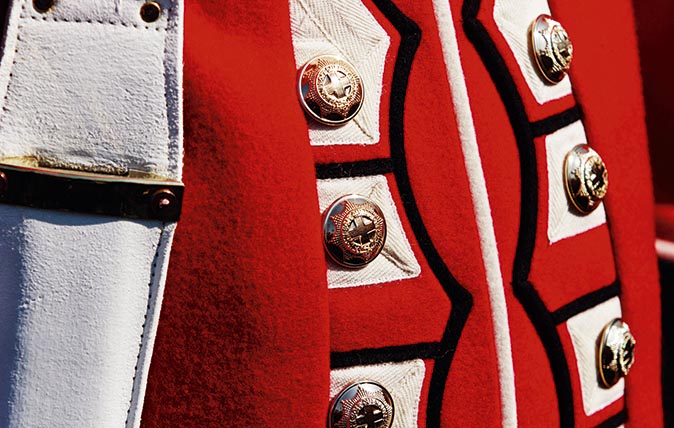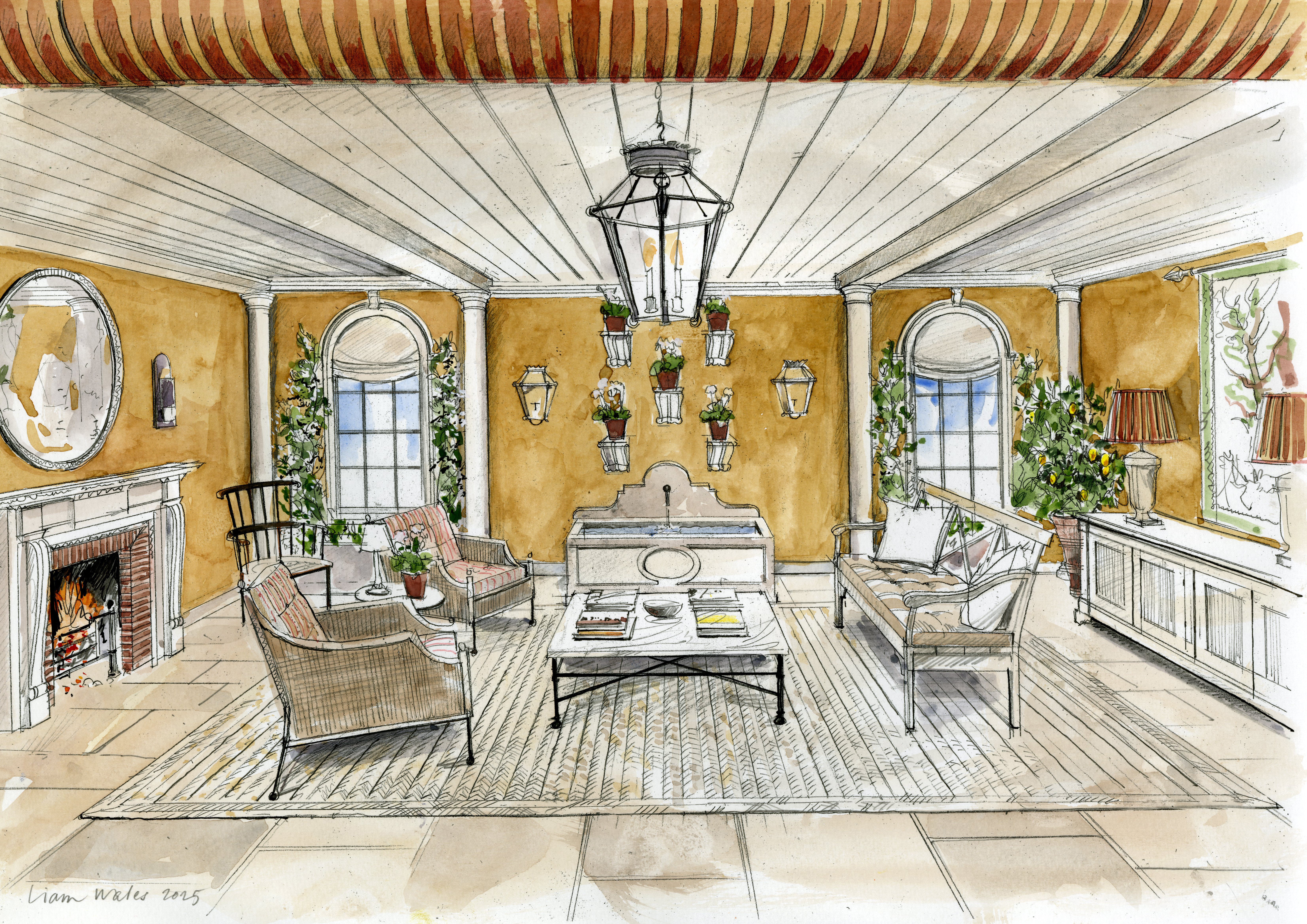Why we love buttons
What is it about buttons that makes us love them so?

When Margaret Thatcher’s personal effects went under the hammer at Christie’s last year (Country Life, January 27, 2016), it wasn’t the power suits or her dispatch box that made headlines. The lots that actually caused the biggest stir were two unassuming plastic containers, stuffed with fastenings of every shape, size and colour.
Publicly, the Iron Lady operated on a grand scale, but her most enduring passion was altogether more miniature. ‘She felt that buttons made an outfit,’ her personal assistant Cynthia ‘Crawfie’ Crawford remembered in an interview. ‘I was always buying them for her. When she went to New Orleans to make a speech, I got on a trolley bus and went shopping for them.’
Once Crawfie had returned from one of her trips, a garment would be carefully chosen to showcase her findings picture the black brocade suit with outsize pearl-and-diamond buttons that Lady Thatcher swept into Claridges wearing on her 70th birthday. If she was sewing them on herself, she might use her thimble commemorating the Falklands campaign.
These days, the buttons that take up most of our time are the ones on computers, microwaves and (vanishingly) phones and, yet, we can easily become totally absorbed by the real thing. Grabbing a fistful of buttons and letting them run through your fingers is a quiet joy, like walking on carpet in bare feet, and an hour spent in John Lewis’s haber-dashery department feels as decadent as dipping into a box of truffles.
What is it that makes them so compelling? ‘There’s something very British about having an interest in collecting this kind of thing I think it’s to do with wanting to put the universe in order,’ says Miles Lambert, curator of costume at Manchester City Galleries. He looks after the 100,000-strong collection of buttons housed at Georgian Platt Hall in Rusholme, which spans centuries.
As an exhibit, it’s wildly popular: ‘So many people remember their mothers and grandmothers having button boxes and that’s something we’ve lost, by and large.’ However, for him, the appeal of buttons has more to do with their context than the way they look in isolation. ‘I like to see them on garments and get a feel for the function,’ he admits. ‘That being said, they do become special once they’re the last thing that’s left from an outfit the buttons survive, the garments don’t. Livery ones, for instance, can tell you so much about uniforms that have long since disintegrated.’
Buttons have been around for practically as long as clothes, but, unlike, say, shoes, they were ornamental right from the word go, rather than starting life as functional items that developed a decorative aspect over time.
Sign up for the Country Life Newsletter
Exquisite houses, the beauty of Nature, and how to get the most from your life, straight to your inbox.
The very first buttons, carved from shell some 5,000 years ago in the Indus valley, were just for show and, although people soon realised they might be useful by the 13th century, proper reinforced buttonholes were appearing they remained powerful signifiers of wealth and status. This was something that Lady Thatcher, the daughter of a dressmaker, knew all too well.
Thus, we have Elizabeth I outclassing King Philip of Spain with her look-at-me buttons and James II marrying Mary of Modena in a suit with silver ones that glittered as he walked. By the late 17th century, any self-respecting gentleman’s coat would feature dozens of ornate buttons and button-making had, as a result, become a mightily prosperous trade.
The silk-covered buttons that came out of Macclesfield, in particular, were much in demand. Sporting them became an easy way of showing you were the right sort a bit like carrying a Hermès Birkin bag today. Even low-ranking army officers, whose livery buttons were designed to keep them in their place, couldn’t resist getting in on the act those with private means would get their tailors to attach much smarter ones to their uniforms, the better to dazzle young ladies of Lydia Bennet’s ilk.
In Charles Dickens’s Dombey and Son, Mr Toots is described as ‘one blaze of jewellery and buttons’. By then, the Industrial Revolution had arrived and buttons were being made, in huge volumes and at speed, by machines. Suddenly, they were everywhere and the lexicon was expanding to match. The Oxford English Dictionary records a boom around this time in button-related figures of speech, from ‘to take by the buttons’ (a precursor of button-holing) to ‘a button short’ (not the sharpest tool in the shed).
Although there have always been far more effective ways of doing up your clothes, buttons exert a pull that Velcro never will. This is as true today as it was 150 years ago, when Victorian ladies’ bodices (which actually fastened with hooks and eyes) were finished with rows of tiny mother-of-pearl ones.
Why go to all that trouble to imply buttoning?
The answer, of course, has to do with what lies beneath. ‘Straightforwardly, buttons are to do with dressing and undressing,’ writes Nina Edwards in her book On the Button: The Significance of an Ordinary Item. Leather buttons, she suggests, carry a much greater charge than their plastic counter-parts because undoing them is so darned difficult. The delay makes the eventual reveal all the more delicious.
Perhaps this goes some way towards explaining koumpounophobia, a horror of buttons it isn’t so much the fastenings themselves that provoke anxiety as the idea of undoing them and everything that implies. More than anything, buttons have soul. They come with eyes (of sorts) and their own particular expressions. Needing a metaphor for the miracle of creation, Dorothy L. Sayers (creator of Lord Peter
Wimsey) reached for the most ordinary yet potentially extraordinary thing in the world. ‘A million buttons,’ she wrote in her 1941 theological tract, The Mind of the Maker, ‘stamped out by machine, though they may be exactly alike, are not the same button.’
A very brief history of buttons
3,000bc The earliest recorded buttons are carved from shell in the Indus valley (now Pakistan)
About 900bc Buttons made of metal alloys are hammered into shape during the Bronze Age
1250 The first button-makers’ guild is established in France
1600s As the Renaissance gets under way, buttons become more and more elaborate. Some of the showiest are made from pressed flowers or even insects under glass
1673 James II marries Mary of Modena in a glittering suit covered with silver-embroidered buttons
1861 After the death of Prince Albert, Queen Victoria takes to wearing mourning buttons made from carved black jet, starting a fashion for them
1976 The Button Queen, a one-stop shop stocking buttons of every conceivable style, opens on Marylebone Lane, London W1. Run by the Frith family, it remains a favourite of collectors, Hollywood costumiers and fashion designers
All buttoned up
- In tailoring, the buttons on suits and blazers are referred in a short-hand that references the total number of buttons, followed by the number that actually fasten so a classic four-button men’s jacket would be a ‘four-on-two’
- During the golden age of smuggling, some criminals used large, hollowed-out buttons to transport their loot
- Louis XIV of France’s button-buying habit nearly bankrupted him he owned a coat decorated with 123 real diamond ones
- The opening titles of the BBC’s 1995 adaptation of Pride and Prejudice feature a close-up of fabric-covered buttons
-
 The big reveal: A first look at Country Life's RHS Chelsea Flower Show stand
The big reveal: A first look at Country Life's RHS Chelsea Flower Show standInterior designer Isabella Worsley reveals her plans for Country Life’s ‘outdoor drawing room’ at this year’s RHS Chelsea Flower Show.
By Country Life
-
 Schreiber House, 'the most significant London townhouse of the second half of the 20th century', is up for sale
Schreiber House, 'the most significant London townhouse of the second half of the 20th century', is up for saleThe five-bedroom Modernist masterpiece sits on the edge of Hampstead Heath.
By Lotte Brundle